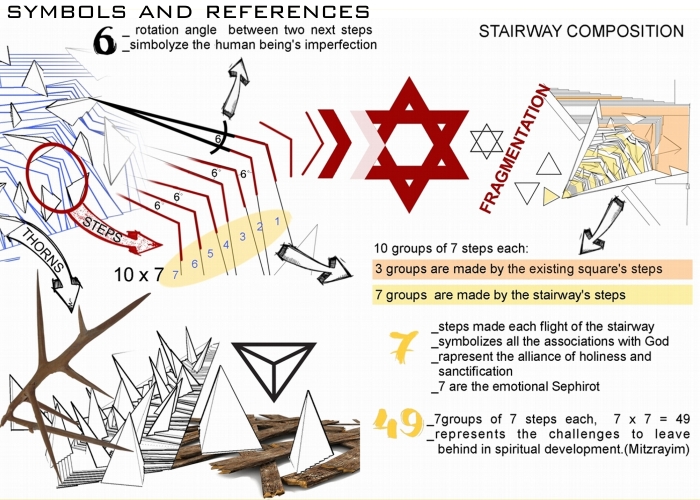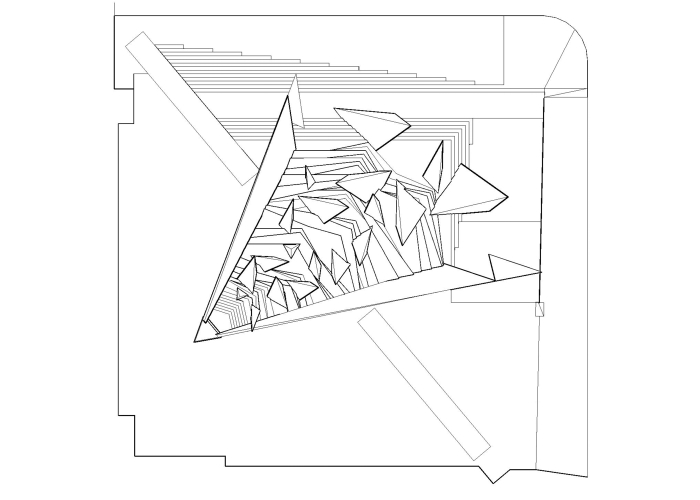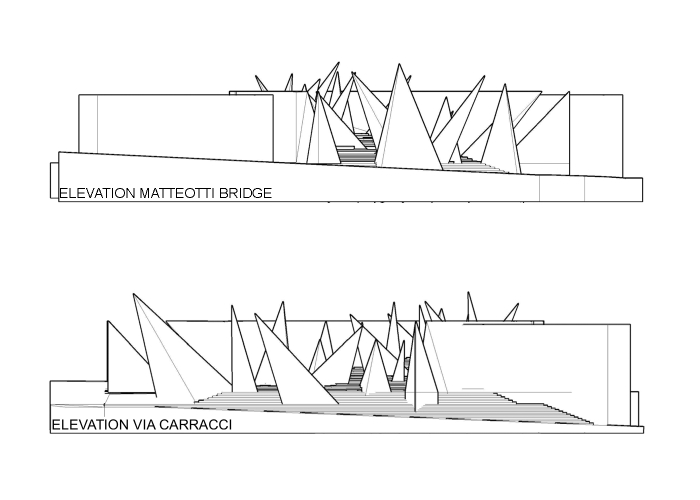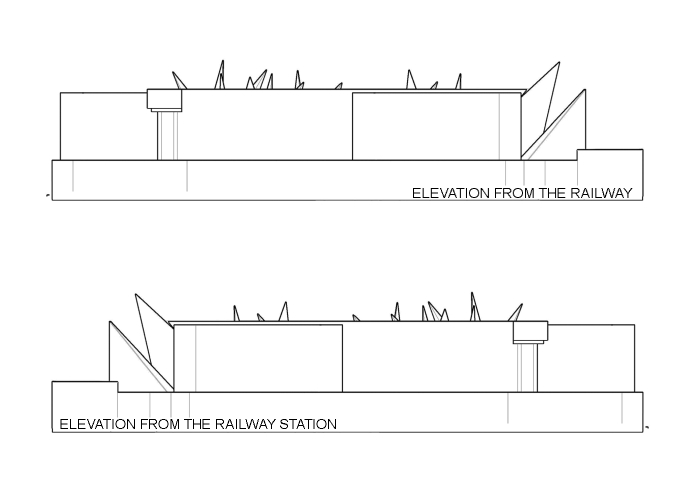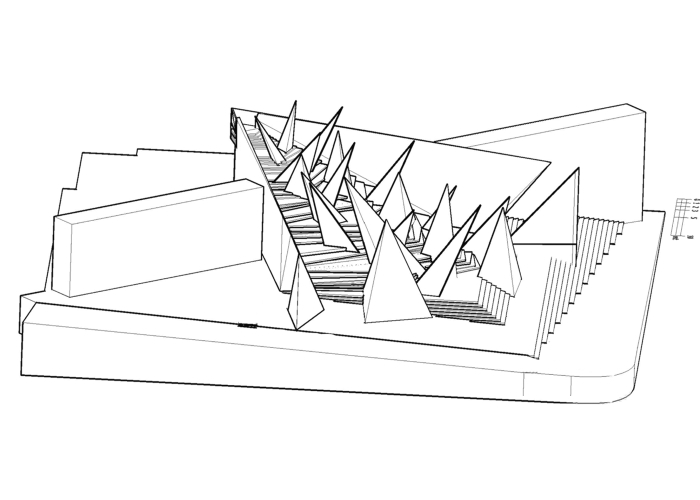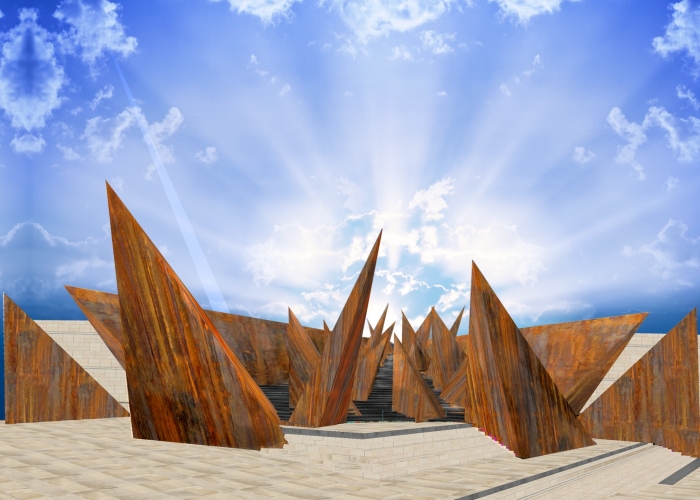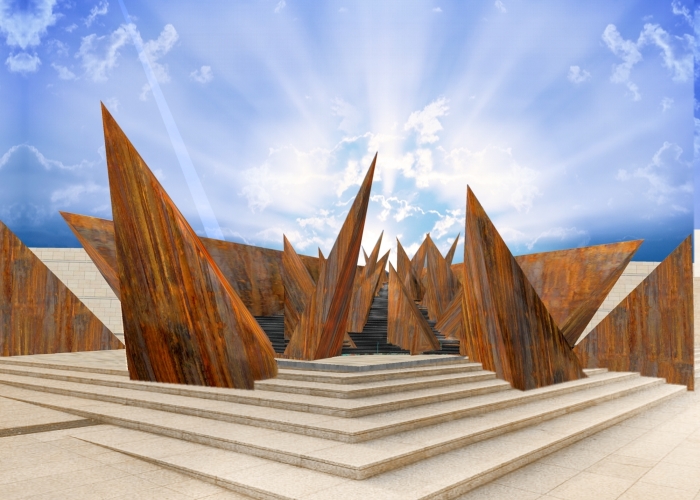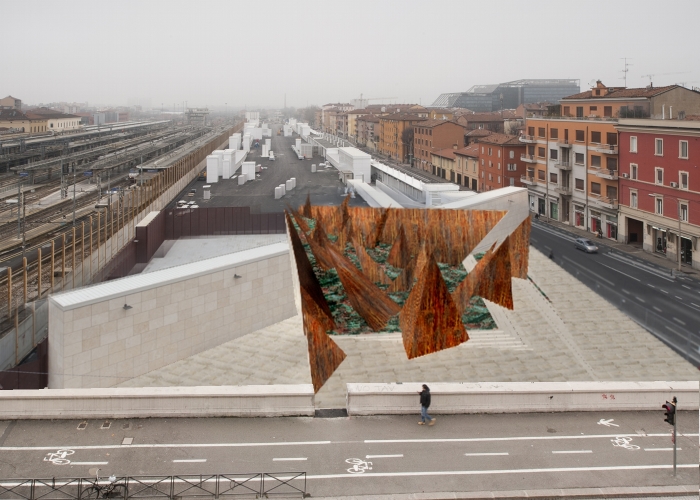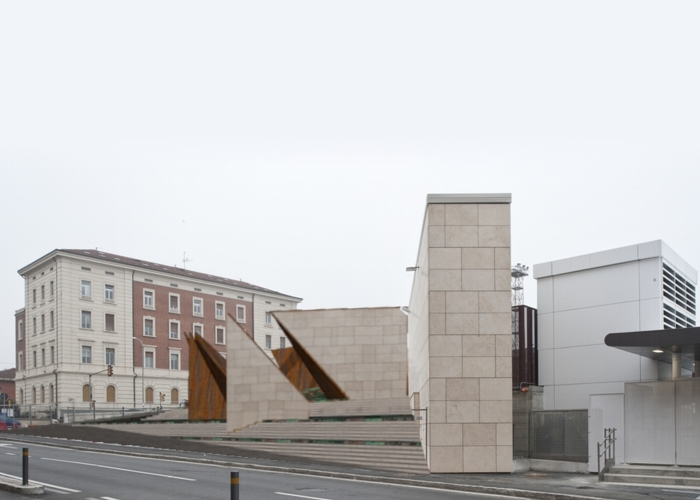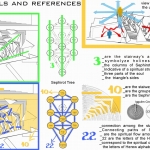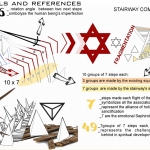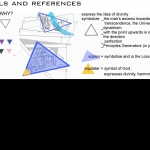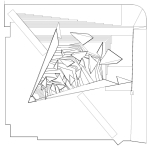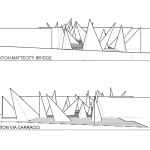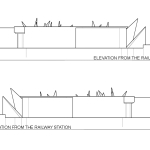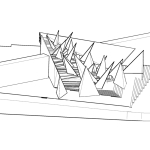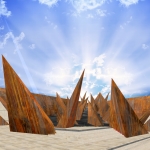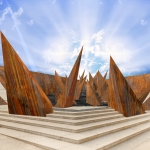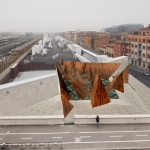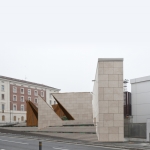Type of work
Project
Building type
monument
Use
infrastructure
City
Bologna
Country
Italy
Year
2015
Client
cityhall of Bologna
Plot area
2060 m²
Area of intervention
2060 m²
WHO MADE THE WALK OF KNOWLEDGE HAS BECOME A RIGHTEOUS MAN
Our evolutionary growth, both as individuals and as collectivity, is based on the experiences that we do; what we live it marks us, it touches us, it leave traces into us which, if not forgotten, sediments in us and built our knowledge. The memorial wants therefore to be a moment of experience both as “zakhòr” and as for those who, for culture, for religion, for age or time, had no personal experience of the Shoah, so they metaphorically can have an experience of it. The feelings of alienation, of loss of every safety, of loss of every certain reference, of suffering… experienced by the deportees are subjective experiences, but if symbolically expressed they can become a shared and common path to all mankind. Through this way man acquires in himself, through direct contact, what was experienced by others. From this experience questions and reasoning arise that allow man to increase his own knowledge and become more wise and righteous.
The memorial is meant to symbolize the experience of the ascesis’ journey towards the Justice (God) that man does, through the constraints, obstacles, difficulties imposed upon him.
The memorial is a stairway without rules and regulations, scattered by “stumbling”, where the passer-by is brought from his “default” world (the existing square’s steps), through a journey that subverts the building’s structural and natural order and that creates a constrictive feeling of uncertainty, of uneasiness, until he gets onto a panoramic terrace where to have a different perspective and to recognize the Beauty of creation both divine and human. The passer-by, climbing the staircase, will be in a rough and uneven way neither easy nor clear: Steps, with differences in heights, in form, rotate among them of a 6 degrees angle and they are gathered in 10 groups of 7 steps each. From staircase’s inside giants elements come up, like thorns, which make more oppressive the ascent way and divide the space into 3 routes and 22 connections. Only in the last set of steps, regulars and without thorns, the staircase will allow access to the panoramic terrace from which you contemplate The Beauty in the urban landscape. Unlike the ascent from the panoramic terrace you will be have a different awareness of the staircase (world) that will allow you to recognize in it the correct walk (made by ergonomic steps). Shapes and numbers that give the composition of the stairway are highly symbolic of Jewish culture, but their impact is noticeable in many other cultures. The staircase will have metal carpentry structure; inside the staircase will be clad in Corten for his recall to the clotted blood+rust color and for its easy maintenance. The external walls will recall site characteristics so to “integrate” into it and to better hide what happens on the inside in such way that only when you are already inside you have the true knowledge of what happens.



